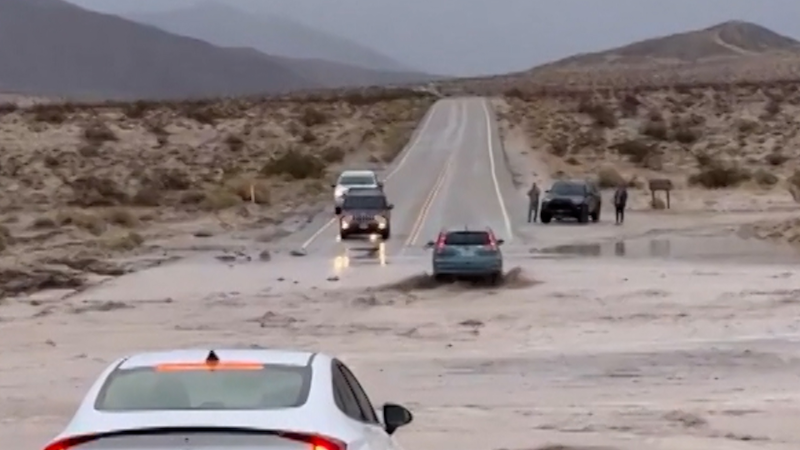Starliner's first crewed launch postponed until at least Wednesday
Earlier test launches were delayed for many reasons, including the use of flammable tape in the Starliner capsule, a buzzing noise detected on the launch pad, a defective pressure valve on an upper-stage oxygen tank and a helium leak in the service module.

Partner Content

A ULA Atlas V rocket is being prepared to launch the Boeing Starliner spacecraft and NASA pilots Butch Wilmore and Suni Williams on a 10-day mission to the ISS. (Photo credit: Joe Marina/UPI)
June 1 (UPI) -- NASA is still unsure of when it will attempt the first Boeing Starliner crewed mission launch, but it for sure won't be Sunday.
The mission was called off once again Saturday, just 4 minutes before launch due to a computer data problem.
NASA had a backup launch date at 12:03 p.m. EDT Sunday, but it announced Saturday evening that it will not attempt liftoff at that time.
The next launch window is 10:52 a.m. EDT on Wednesday. Another window is Thursday.
United Launch Alliance, a joint venture between between Boeing and Lockheed Martin, wants to "give the team additional time to assess a ground support equipment issue" and is planning an update Sunday.
"We got really close today, and the team did a phenomenal job," Steve Stich, NASA manager for the commercial crew program, told reporters during a post-launch attempt news conference.
"This is kind of the way that spaceflight is," he added. "Every time you go to the pad for a crew flight or any flight, you've got a chance for scrubbing."

NASA test pilots Suni Williams, left and Butch Wilmore speak to NASA managers after walking out from the Operations and Checkout Building on Saturday at Kennedy Space Center in Florida. (Photo credit: Joe Marino/UPI)
A computer launch sequencer problem with the Atlas V rocket triggered a hold less than four minutes before the first crewed launch of the Boeing Starliner spacecraft was to occur.
NASA test pilots Sunita "Suni" Williams and Barry "Butch" Wilmore are attempting the first crewed mission of the Boeing Starliner spacecraft.

The Boeing Starliner spacecraft sits on top of a ULA Atlas V rocket as it's being prepared to launch thee Starliner's first crewed mission from Complex 41 at the Cape Canaveral Space Force Station. (Photo credit: Joe Marino/UPI)
The Atlas V rocket was set to launch the Starliner into space from the Space Launch Complex 41 at the Cape Canaveral Space Force Station in Florida at 12:25 p.m. EDT Saturday.
Prospects for Saturday's launch initially looked good despite a minor setback.
Around 10 a.m., teams found a loss of data from ground valves responsible for replenishing the liquid oxygen and hydrogen to the second, or upper stage, of the Atlas V rocket.
A redundant system worked as intended, which didn't halt or slow the launch.
At 3 minutes and 50 seconds before launch, the computer launch sequencer triggered an automatic launch hold, which scrubbed the day's launch.
The Atlas V rocket uses three large computers to monitor launch conditions and provide triple redundancy if something fails, ULA CEO Tory Bruno told reporters during news conference.
Triple redundancy means there are three ways to do the same task in case one or two other systems fail.
"That ended up scrubbing the mission," Bruno said, adding that it will take up to four hours to remove fuel from the rocket before a team can analyze the problem.

With under four minutes left in the countdown, engineers at the Control Center called a hold to the launch of the ULA Atlas V rocket on Complex 41 at the Cape Canaveral Space Force Station on Saturday. (Photo credit: Joe Marino/UPI)
"If it's as simple as replacing a card, we'll do that" and prepare for a Sunday launch at 12:03 p.m., Bruno said initially.
The test pilots will spend a day traveling to the International Space Station, where it will dock and remain for about a week while testing the Starliner's ability to support a crew in space. Seven astronauts and cosmonauts are aboard the ISS.
The Starliner will return to Earth with a soft landing planned in White Sands, N.M.
It is designed with a service life of 10 launches and landings.
Earlier test launches were delayed for many reasons, including the use of flammable tape in the Starliner capsule, a buzzing noise detected on the launch pad, a defective pressure valve on an upper-stage oxygen tank and a helium leak in the service module.
If the 10-day test flight proceeds successfully, NASA likely will certify the Starliner for use.
Starliner would be the second private U.S. company to sent astronauts to the space station, joining SpaceX.
Report a Typo














